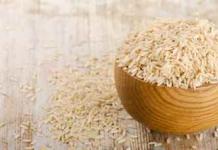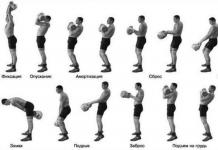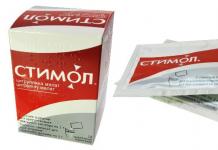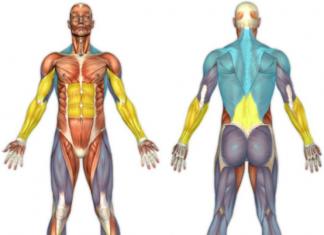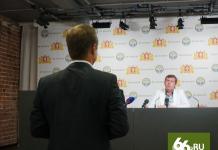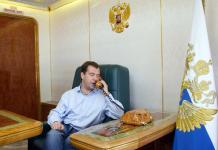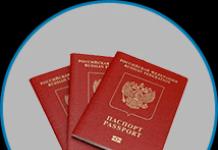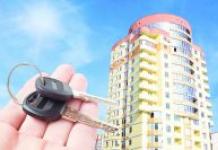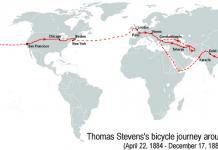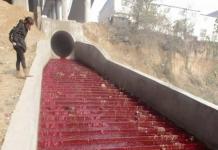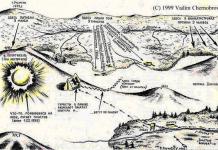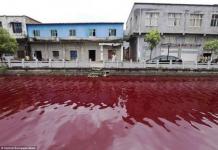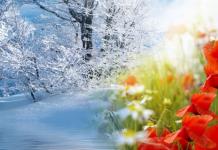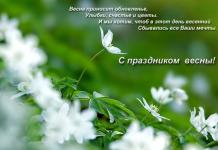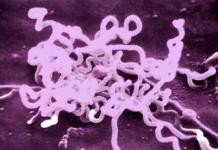Before Trafalgar Square was laid out in Victorian times it was the site of the old Royal Mews, or stables. Hunting falcons were once kept there. The Square was named to commemorate Admiral Lord Nelson's naval victory over the French at Trafalgar in 1805. Today it is a place where people meet, and is a site famous for political demonstrations.
Nelson's Column
The Square's most famous landmark is Nelson's Column. There are four bronze lions around it, modeled by the artist Sir Edwin Landseer. They were cast from the cannon of battleships. Every October 21st there is a service under the column to commemorate Nelson. A few days before Nelson's statue was erected fourteen stonemasons held a dinner on top of the column. Before the statue was hoisted up it was put on show to the public. It was never come down since; people climb up the column to clean and restore it.
Nelson's statue is over 5m high, that about three times his real height. The statue shows Nelson with one arm and one eye. He lost them in battle. The column is a copy of one from a temple in Rome. It is 51m high. Brass relieves around the bottom show battle scenes. They were cast from captured French cannon. Thousands of pigeons congregate in Trafalgar Square. In summer you can buy birdseed to feet them.
Sights in the Square
George the Fourth's statue. Around the Square there are many statues. One of them shows George the Fourth on horse back. He chose the pose himself and made it very heroic - he is riding in Roman costume, bareback and without stirrups.
Charles the First's statue. A statue of the Charles the First on horseback looks down Whitehall. During the Civil War it was sold to a brazier to melt down. But he hid it in his garden and produced it again when the monarchy returned.
The Police Box. In a corner of the Square there is a small hollow pillar, built as an observation post for one policeman. It is London's smallest police office. The lamp on top is said to come from Nelson's flagship Victory.
The Standards of Length. On the north wall a brass plaque shows the British Imperial standards of length. Mileages from London are traditionally measured from behind Charles the First's statue.
Saint Martin-in-the-Fields. The church of Saint Martin-in-the-Fields is on the north-east side of the Square. It was built in 1721, and many wooden churches in America, particularly in New England, are copies of it. It is famous for lunchtime concerts. Nell Gwynn and the furniture marker Thomas Chippendale are buried there.
Eleanor's Cross. In the nearby Stand, by Charing Cross Station, you can see Eleanor's Cross. The original one was erected by Edward the First in memory of his wife Eleanor. It marked the last resting place of her funeral procession before it reached Westminster abbey in 1291. Today's cross is a Victorian version.
Celebrations
Every year Norway sends Britain a huge Christmas tree, as thanks for wartime help. It stands in the Square from mid-December, when the Ambassador of Norway switches on the lights. Carols are sung around it every evening until Christmas. On New Year's Eve people go to Trafalgar Square to hear the mid-night chimes of Big Ben.
(No Ratings Yet)This is one of the nerve-centers of London. It was named Trafalgar Square to commemorate the historical naval victory won on the 21st of October 1805 by the British fleet under the command of Horatio Nelson over the combined French-Spanish fleet commanded by Villeneuve. The battle took place at Cape Trafalgar in the mouth of the Straits of Gibraltar and lasted several hours. Nelson was fatally wounded by a shot which broke his backbone. He died on board his flagship the Victory, but not before being told that he had won the battle.
Nelson's Column, with the statue of Admiral Lord Nelson on top, rises in the center of Trafalgar Square. This most impressive monument is 170 feet tall. The statue of Nelson, placed facing towards the sea he loved, measures 17 feet in height.
To the north-east of Trafalgar Square there is the building that houses the National Gallery of Art - one of the most important Art Galleries in the world - and behind is the National Portrait Gallery.
Quite often the square becomes the location for meetings and in it crowds of Londoners congregate to celebrate political rallies. So it can be said that Trafalgar Square is the heart from which the beat is emitted to all the Londoners.
There are many pigeons in the square and Londoners like to feed them. Everybody knows that the dove is the symbol of peace all over the world.
Trafalgar Square
This is one of the centers of London. The area was named Trafalgar to commemorate the historic naval victory English fleet under the command of Horatio Nelson over a mixed Franco-Spanish fleet under the command of Villeneuve on October 21, 1805. The battle took place at Cape Trafalgar at the mouth
Strait of Gibraltar and lasted for several hours. Nelson was mortally wounded by a gunshot that shattered his spine. He died aboard his flagship Victoria, but not before being told that he had won the battle.
Nelson's Column, with a statue of Admiral Lord Nelson at its summit, rises in the center of Trafalgar Square. This is the most impressive monument, 170 feet high. The statue of Nelson, facing the sea he loved so much, is about 17 feet high.
To the northeast of Trafalgar Square is the building that houses the National Gallery of Art, one of the most important art galleries in the world, and behind the National Portrait Gallery.
Very often the square becomes a meeting place, and crowds of Londoners gather here in case of political debate. Thus, we can say that Trafalgar Square is the heart, the beating of which is transmitted to all Londoners.
There are many pigeons in the square, and Londoners love to feed them. Everyone knows that the dove is a symbol of world peace.
Trafalgar Square, set in central London, is one of Britain "s great tourist attractions. A visit to the capital would be incomplete without going to marvel at Nelsons Column and the four giant lions at its base, or to admire the lovely splashing fountains and to feed the pigeons, who have made their home here. Built to commemorate Admiral Nelson, the square was named after the Spanish Cape Trafalgar where his last battle was won.
It was John Nash, who designed the first layout of the square in the 1820 "s. Although he didn" t live to see its completion, his Neo-classical design was adhered to, achieving the unified effect of the beautiful buildings we admire today ... Building of the square began in 1829 and was still being developed into the 1840 "s.
The National Gallery occupies the north side of the square. In the stone under the balustrade, you can see the Imperial Standards of Length (1 foot, 2 feet, 1 yard etc.).
On the east side is South Africa House, with African animals featured on the stone arches. Sir Robert Smirke, who designed The British Museum, also created Canada House, on the west side. Now open to the public, Canada House is worth a visit to enjoy the original classical interior, and to see the interesting changing exhibitions on view. Visiting Canadians may be interested to know that they can read the Canadian newspapers, browse on line, or send and receive emails in Canada House.
The chartists assembled in Trafalgar Square in 1848 and since then, it has been a favorite meeting place for demonstrators and marchers, trying to gain attention for their cause.
Each year in December, the people of Norway send a gift of an enormous Christmas Tree to Britain, which is erected in Trafalgar Square. This is in thanks for Britain "s part in their liberation during the second world war. One of the unforgettable sights of London is to see the giant tree after dark, when it is lit by hundreds of twinkling fairy lights, carol singers grouped around, while floodlights illuminate the sparkling water in the fountains of the square. This picture is depicted on many Christmas cards, sent all over the world each year.
The equestrian statue of Charles I at the south end of the square is noteworthy, as being the original site of Charing Cross. This is the spot from which all "distances from London" are measured. Edward I erected a cross here in 1290, the last of twelve marking the resting places of the funeral cortege of his wife Eleanor as it made its way from Nottinghamshire to Westminster Abbey. The cross remained on this spot, until its removal during the civil war in the mid 17th century. A replica was placed in the forecourt to Charing Cross Station two centuries later.
Surrounding Nelson are statues of other distinguished men. On either side, are the bronze statues of Sir Henry Havelock and Sir Charles James Napier both Victorian major generals. Fronting the north wall are busts of Beatty, Jellicoe and Cunningham all famous military leaders. In the north east corner, is a statue of George IV on horseback, commissioned by him, while in the opposite corner the pedestal does not yet have a permanent statue.
Is Trafalgar Square. It’s a place where the three Westminster’s streets: Strand, Whitehall and Mall meet. It's a traditional place for meetings, demonstrations, other gatherings and mass events holding. The main country’s Christmas tree imported from Norway is set there annually. Norway presents Britain with a tree to thank for liberation from the Nazis.
It was named so by George Taylor in commemoration of the Battle of Trafalgar that took place in 1805. In the center of the square the Nelson's Column, surrounded with fountains, is situated. Horatio Nelson was a commander admiral at that historical naval battle who died defeating Napoleon. His statue erected in 1843 is about 200 feet high and has 4 sculpted lions on its basement (added later on).


There are 4 plinths in every corner of Trafalgar Square with statues of George IV, Charles Napier, and Henry Havelock. The northwest plinth also known as the fourth plinth remained empty for 150 years. There should have been an equestrian statue of King William IV. Though, due to the lack of money the project wasn’t completed. Recently it has been decided to place there modern art installations that should be changed every 2 years. Since 2013 there is an ultramarine blue statue of Hahn / Cock.

The National Gallery of London is also situated on the north side of the square. It was completed in 1843. Its collection is compiled of the masterpieces of famous artists: Rafael, Rembrandt, Titian, Hogarth, Michelangelo, Rubens, Renoir and other. The National Portrait Gallery is a world-renowned gallery that has in its disposal the portraits of outstanding British people since Tudor times till nowadays. The portraits are arranged thematically and must depict people who have been dead at least for ten years.

And South Africa houses as well as Admiralty Arch and St. Martin-in-the-Fields' church are other prominent places of visit located nearby. The style of the last one had been copied by various architects for building churches, especially in the USA.
If a tourist experiences some troubles, he can ask for the help the heritage wardens which are present in the square around the clock. They provide with the appropriate answers and may give some pieces of advice as for the nearby attractions.
Till the recent time the doves were a special attraction of the place. There could be up to 35 thousand pigeons on the square simultaneously. Partially it was because of the tourists who fed birds. In fact, that made a great problem as the city administration spent 160 thousand dollars for cleaning the streets and monuments from the bird droppings every year. In 2007 the feeding pigeons was strictly prohibited that led to the decreasing of the birds number.
Trafalgar Square is the pride of Londoners. This place is the center of Westminster and connects the three main streets. It is also striking in its grandeur and attracts crowds of tourists every year to admire this attraction. The square was founded in 1820. Initially, in its place were located aviaries for royal falcons. Later, stables were built there, and after they were demolished, the local authorities decided to create a huge square. The goal of this project was to improve the city and provide people with a place for cultural recreation.
The area was named after the naval battle of Trafalgar at the site, led by Admiral Horatio Nelson. In memory of this outstanding person, a column was erected on the square with a granite monument to Nelson at the top. Column height 56 meters. At the foot, there are four huge bronze lions.
In addition to the monument to Nelson, the rest of the space includes many other interesting structures. These are sculptures of great people who played a significant role in the history of England, majestic fountains, two National Galleries that contain about 2300 paintings, the Church of St. Martin.
Trafalgar Square is surrounded by many roads, and its center is the main transport interchange. Rush hour traffic is growing rapidly. But recently, the number of cars has decreased, for the safety of pedestrians and those who come there to rest.
Many years ago, Trafalgar Square was a haven for wild pigeons, they flocked from everywhere, tourists and local citizens loved to feed them. But it was soon recognized that pigeons leave behind a lot of dirt and spoil stone structures. In 2000, the authorities banned the sale of bird feed, but people continued to feed them anyway. And then they introduced a ban on feeding, and a punishment in the form of a monetary fine, for those who disobeyed. Over time, the pigeons began to disappear and now they practically do not arrive.
Since its inception, Trafalgar Square has become a traditional place for rallies and pickets, as well as for festive celebrations and festivals. Each New Year residents are greeted by gathering in the square, where the UK festive tree is set up every time.
Translation
Trafalgar Square is the pride of the inhabitants of London. This place is the center of Westminster and connects the three main streets. It also amazes with its greatness and annually gathers crowds of tourists to admire this landmark. The square was founded in 1820. Initially, in its place were aviaries for royal falcons. Later, there were built stables, and after they were demolished, local authorities decided to create a huge area. The purpose of this project was to beautify the city, and to provide people with a place for cultural recreation.
The square was named after the naval Battle of Trafalgar on this site, which was led by Admiral Horatio Nelson. In memory of this outstanding man, a column with a granite monument of Nelson on the summit was erected on the square. The height of the column is 56 meters. Four huge lions of bronze are installed at the foot.
In addition to the monument to Nelson, the rest of the space includes many other interesting buildings. These are sculptures of great people who played a significant role in the history of England, majestic fountains, two National Galleries which hold about 2300 paintings, the Church of St. Martin.
Trafalgar Square is surrounded by many roads, and its center is the main traffic junction. The movement of traffic is intensively growing during the peak hours. But recently the number of cars has decreased, for the safety of pedestrians, and those, who come there for resting.
Many years ago Trafalgar Square was a haven of wild pigeons, they flew everywhere, and tourists and local citizens liked to feed them. But soon it was recognized that the pigeons leave a lot of mud after themselves, and spoil the stone structures. In 2000, the authorities banned the sale of feed for birds, but people still continued to feed them. And then they introduced a ban on feeding, and punishment in the form of a fine for those who violated the ban. Over time, the pigeons began to disappear and now almost do not arrive.


